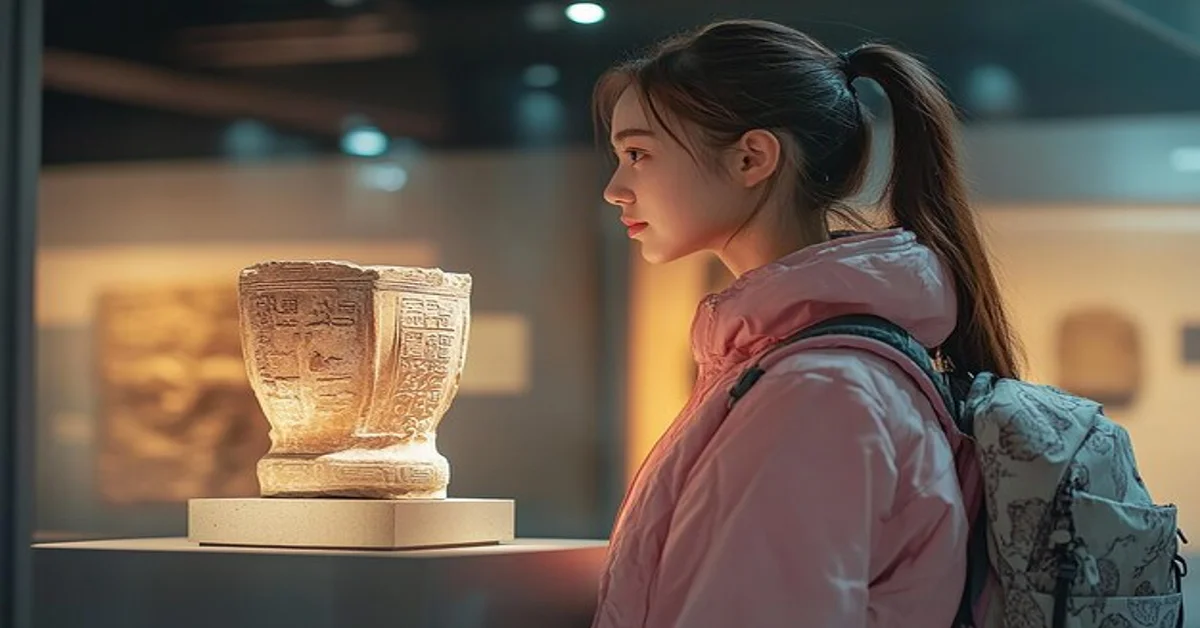Ancient art serves as a captivating window into the lives of our ancestors. Each brushstroke, carving, and symbol tells a story waiting to be uncovered. Think about it: what messages were they trying to convey? What truths did they hold dear? As we explore petroglyphs and pictographs, we dive deeper into their world.
These artistic expressions are more than mere decorations; they’re powerful forms of communication that transcended language barriers. Through them, we can connect with cultures long gone and gain insights into human experience across millennia. Join us on this journey through time as we decode the rich symbolism embedded in ancient artwork from various regions around the globe. Whether you’re an art enthusiast or history buff, prepare for an exciting exploration of creativity that shaped civilizations!
Petroglyphs and Pictographs as Ancient Communication
Petroglyphs and pictographs are among the earliest forms of human expression. Carved or painted onto rock surfaces, these images provide a fascinating glimpse into ancient life. They often depict animals, human figures, and abstract designs that were significant to the communities that created them.
What makes petroglyphs especially intriguing is their permanence. These engravings can last for thousands of years, preserving messages across generations. Imagine standing before a rock face etched with stories from our ancestors! Each mark holds meaning, serving as a historical record of events or beliefs.
Pictographs, on the other hand, showcase vibrant colors and creative imagery applied directly to stone surfaces using natural pigments. They offer insights into cultural practices, rituals, or spiritual beliefs of ancient peoples. The use of color adds an emotional layer that invites viewers to interpret each scene uniquely.
Both forms served practical purposes too—marking territories or resources like water sources and hunting grounds. As visual languages without written words they bridged gaps in communication across cultures.
By studying these artworks closely we can uncover layers upon layers of history shaped by creativity and necessity alike. Every symbol tells us something profound about humanity’s early attempts to communicate with one another through art.
Unveiling the Symbolism in Ancient Art
Ancient art is a treasure trove of symbolism, each piece telling stories beyond what meets the eye. From cave paintings to intricate sculptures, these artworks often used symbols to convey complex ideas and beliefs. A simple line or shape could represent life, death, or the divine.
In many cultures, colors also held significant meaning. For instance, red might symbolize power or fertility in one society while representing danger in another. This variance adds depth to our understanding of ancient messages.
Moreover, animals frequently appear as powerful symbols in ancient art. The lion may stand for strength and courage while a serpent can signify transformation and rebirth. These representations connect humans with nature’s essence and their spiritual beliefs.
Rituals played a crucial role too; they were often depicted through artistic expressions that communicated communal values and practices. Such imagery bonded communities over shared traditions and histories.
Through careful analysis of these symbols, we unlock layers of meaning that reveal how our ancestors perceived their world. Every brushstroke holds significance—an invitation to explore deeper into human heritage across generations.
Exploring Ancient Art from Different Regions
Ancient art reveals the rich tapestry of human history across numerous cultures. Each region has its distinct style, reflecting local beliefs and environmental influences. From the intricate carvings of Mesopotamia to the vibrant frescoes of Mesoamerica, every piece tells a story.
In Egypt, hieroglyphics blend with stunning wall paintings that document daily life and religious practices. The use of color and symbolism provides insight into their society’s values. These artworks were not merely decorative; they served as a bridge between the earthly realm and the divine.
Meanwhile, in Asia, ancient art exhibits incredible attention to detail. Chinese brush painting emphasizes harmony with nature. Japanese woodblock prints capture fleeting moments in everyday life through exquisite craftsmanship.
The indigenous peoples of Africa express spirituality through masks and sculptures made from locally sourced materials. Their artwork often serves ceremonial purposes while connecting communities to their ancestors.
Each region’s artistic expression is a reflection of cultural identity and belief systems. By exploring these diverse forms, we gain deeper insights into what shaped our ancestors’ lives and societies throughout history.
Understanding the Purpose of Ancient Artwork
Ancient artwork served many purposes, reflecting the beliefs and values of the societies that created them. It was often a means of communication, conveying messages about culture, religion, or daily life. Each piece had its own story and significance.
Religious symbolism is prevalent in ancient art. Temples adorned with intricate carvings depict deities and mythological scenes. These images were not merely decorative; they played a vital role in rituals and worship practices. They connected individuals to their spirituality.
Social status also influenced artistic expression. Many artworks commemorate important figures or events, serving as visual records of accomplishments and lineage. Wealthy patrons commissioned pieces to showcase their power or legacy within their community.
Moreover, ancient art functioned as an educational tool for future generations. Storytelling through visuals preserved history long before written language became prominent. The narratives captured in these works offer insights into the customs and lifestyles of our ancestors.
Some artworks acted as protective symbols against evil forces or misfortune. Artisans infused their creations with meaning intended to safeguard homes or bless families with prosperity—a testament to how deeply intertwined art was with everyday life in ancient cultures.
Masterpieces of the Ancient World
The masterpieces of ancient art capture the essence of human creativity and cultural expression. These works have stood the test of time, revealing insights into the societies that created them. They tell stories, convey beliefs, and reflect the values held by our ancestors.
Take, for example, the iconic sculptures of Ancient Greece. The Parthenon marbles showcase not only stunning craftsmanship but also an understanding of beauty that continues to inspire artists today. Each figure is imbued with a sense of movement and emotion, allowing viewers to connect with ancient ideals.
In contrast, Egyptian art offers a glimpse into spirituality and mortality. Hieroglyphics adorn tombs and temples, serving both decorative purposes and narrative functions. The grandeur of monuments like the Great Sphinx speaks volumes about their creators’ reverence for life beyond death.
Asian cultures contributed richly to this tapestry as well. The intricate pottery from China or serene Buddhist statues from Japan embody philosophical ideas while showcasing technical skill in crafting materials.
These masterpieces are more than just artifacts; they are windows into past civilizations. As we explore these works today, we gain valuable perspectives on humanity’s shared journey through time.
Deciphering Symbolism Through Ancient Artifacts
Ancient artifacts serve as windows into the past, revealing layers of meaning that often remain hidden. Each piece carries its own unique symbolism, intricately woven into the fabric of history. By examining these objects closely, we can uncover insights about the cultures that created them.
Take pottery, for example. The designs etched onto ceramic vessels were not merely decorative; they told stories and conveyed beliefs. Patterns might represent nature’s cycles or divine protection, linking everyday life to spiritual realms. Studying these symbols helps us understand ancient priorities and perspectives.
Sculptures also hold significant value in interpreting symbolism. Statues often depicted gods or revered figures with specific postures and attributes indicating their societal roles or powers. Analyzing these characteristics allows us to grasp what qualities were esteemed by those civilizations.
Jewelry is another artifact rich in meaning. Adornments frequently signified status or familial ties but could also embody protective charms engraved with symbols believed to ward off evil spirits.
By meticulously decoding these elements within ancient art, we connect more deeply with our ancestors’ experiences and emotions, bridging vast timelines through shared human expression.
Conclusion
The study of ancient art reveals a vibrant tapestry of human expression and communication. Each petroglyph, pictograph, or sculpture serves as a vital link to our ancestors’ thoughts, beliefs, and experiences. This rich legacy not only enriches our understanding of history but also connects us to the shared narratives that shape our cultures today.
By delving into the symbolism embedded in these artworks, we grasp insights into their creators’ lives and societies. Whether it’s through sacred rituals or everyday activities depicted on cave walls, every stroke holds meaning. The artistic expressions from various regions—be it Mesopotamia, Egypt, or Mesoamerica—showcase unique interpretations yet resonate with universal themes.
Ancient art was never just about aesthetics; it played crucial roles in social cohesion and cultural identity. These masterpieces echo across time and space like whispers from the past. As we continue to explore these artifacts and decipher their meanings, we uncover layers of history that inform our present.
In embracing this wealth of knowledge found within ancient art forms, we foster appreciation for human creativity throughout ages—a reminder that while times may change, the quest for connection remains timeless.









